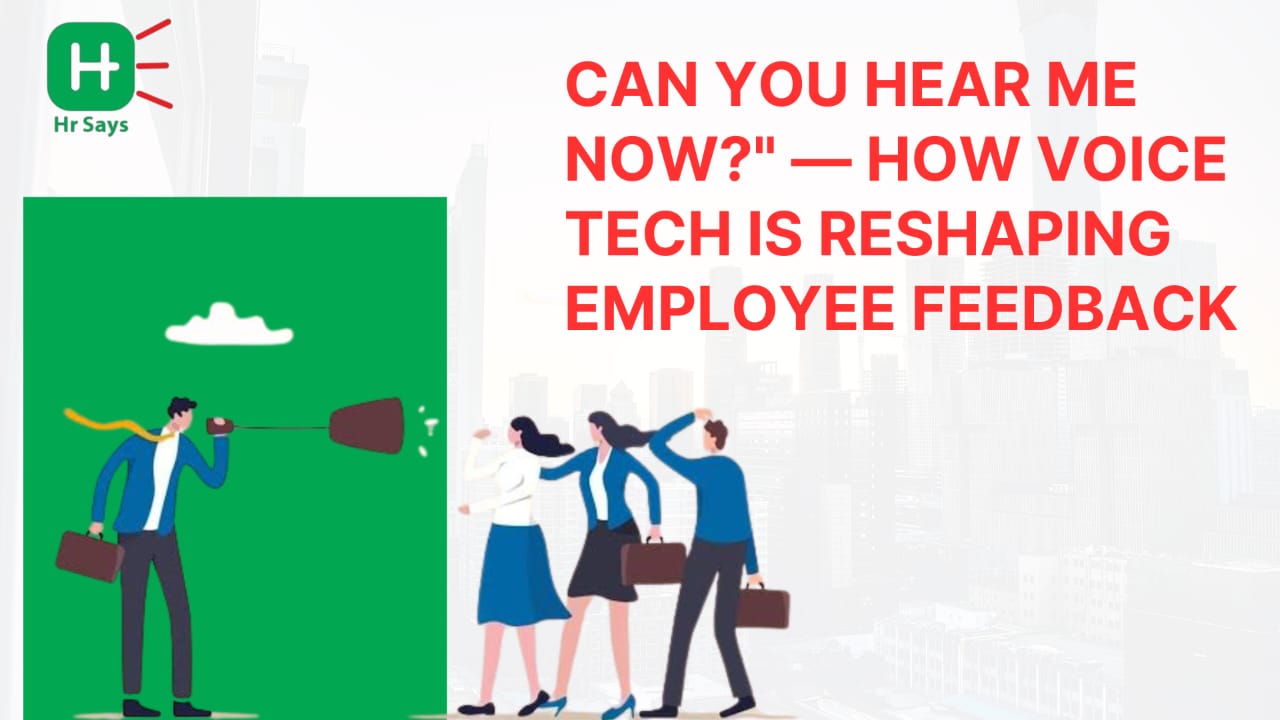What if employees could just speak their minds — and be heard, truly heard? No long surveys. No awkward checkboxes. Just… voice. That’s where the next wave of feedback begins. And HR is leaning in.
The Old Feedback Loop Was Flawed
Let’s face it.
● Annual surveys felt like corporate homework.
● Pulse checks were often ignored.
● And when feedback was shared? Action rarely followed.
Employees noticed. Trust dipped. Participation dropped.
Meanwhile, managers wondered why silence filled the room.
Enter Voice Tech: Not Just Talk, but Signals
Voice-enabled feedback tools are being quietly introduced. Some on mobile. Others on kiosks or wearable integrations.
Employees can record thoughts in seconds. No typing. No structure. Just stream-of-thought reactions.
And here's the twist: what they say matters less than how. Tone, pace, hesitation — they all tell a story.
Behind the scenes, natural language processing and emotion recognition kick in. Patterns are spotted. Tension is flagged. Trends emerge.
Without anyone checking boxes.
Why It’s Gaining Ground
● Faster feedback: No need to wait for quarterly forms.
● More authentic tone: Speaking feels less filtered.
● Higher participation: Especially from frontline or non-desk staff.
● Richer data: Sentiment is measured, not assumed.
It’s not perfect. But it’s closer to real.
But Let’s Not Get Carried Away
There’s a fine line between listening and surveillance. Employees may wonder:
● Who hears me?
● Will I be flagged for tone?
● Can I trust this voice assistant?
And they’d be right to ask. Because tech without trust feels invasive. The best systems? They
keep anonymity, offer control, and are optional.
Voice feedback isn’t for venting. It’s for listening — with care.
So, Is This the Future of Feedback?
Maybe. Maybe not for everyone. But for fast-moving teams, hybrid offices, and time-poor
workers? It’s a step forward.
Not to replace human conversations — but to catch the ones we often miss.
The quiet sighs. The frustrated tone. The ideas buried in pause.
Conclusion
Voice tech won’t fix culture. But it can tune into what’s often left unsaid.
Feedback isn’t a form. It’s a signal. And if voice can help decode it — even slightly — Then
maybe, finally, we’re learning to listen.
Even when no one’s watching.

 Voice tech is entering the HR chat. Not just to automate — but to understand. Is it more noise,
or finally a step toward honest employee feedback?
Voice tech is entering the HR chat. Not just to automate — but to understand. Is it more noise,
or finally a step toward honest employee feedback?












.jpeg)
.jpeg)

.jpeg)

.jpeg)


.jpeg)

.jpeg)

.jpeg)


